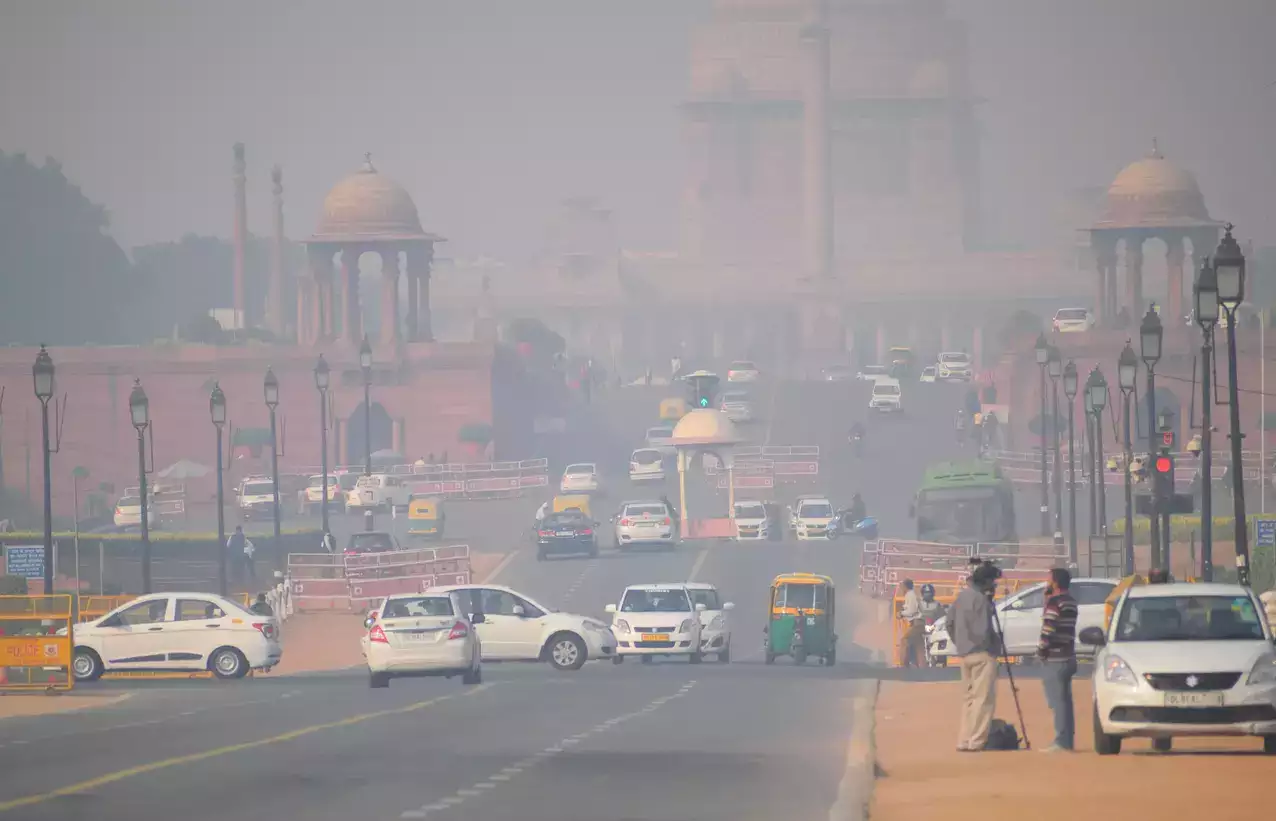 Delhi government aims to combat the pollution crisis, which has reached alarming levels, with an AQI above 400 in multiple locations across the city.
Delhi government aims to combat the pollution crisis, which has reached alarming levels, with an AQI above 400 in multiple locations across the city.New Delhi: The air quality in Delhi continues to worsen as the city's Air Quality Index (AQI) reaches hazardous levels, posing serious health risks to residents. Today, Delhi AQI was recorded at 406, placing the city in the 'severe' category, according to the Central Pollution Control Board (CPCB). As Delhi's AQI today hits hazardous levels, a thick layer of smog enveloped the capital for the fourth consecutive day, with pollution levels affecting visibility and breathing conditions across various parts of the city.
Delhi AQI Severe in Multiple Areas
Drone footage captured early Saturday morning revealed a dense blanket of smog near prominent locations like the All India Institute of Medical Sciences (AIIMS) and Pragati Maidan. The AQI in areas such as Pragati Maidan, ITO, and Sarai Kale Khan ranged between 357 and 406, categorized as either 'very poor' or 'severe.' The smog further engulfed the Kalindi Kunj area, with visibility reduced and the AQI remaining in the hazardous range.
High-rise buildings in affected areas were barely visible as pollution levels continued to rise. In addition to the poor air quality, toxic foam caused by industrial effluents and untreated sewage was reported near the Kalindi Kunj and Okhla Barrage, further adding to the environmental concerns.
Delhi air pollution: Residents Struggle with Health Issues
Local residents are voicing concerns over the worsening Delhi AQI. Prateek Jain, a Delhi resident, described the difficulties faced during his morning run at India Gate. He mentioned, "While running, we are getting more tired, we need frequent breaks, there is coughing and the throat is also hurting. We are not able to run longer due to pollution." The AQI around India Gate was recorded at 414, categorized as 'severe.'
Government's Response to Air Quality Crisis
To tackle the worsening air pollution in Delhi, the state government has implemented a ban on BS-III petrol and BS-IV diesel four-wheelers under the Graded Response Action Plan (GRAP-III), effective from Friday. The move aims to reduce emissions from older vehicles. Violators of the ban face a fine of Rs 20,000 as per Section 194(1) of the Motor Vehicle Act, 1988.
In addition, the Commission for Air Quality Management (CAQM) has invoked the GRAP-III to mitigate pollution in Delhi-NCR. This includes measures such as increasing the frequency of road sweeping, sprinkling water on roads to reduce dust, and banning certain construction and demolition activities. The action plan is classified into four stages based on AQI levels, with Stage III addressing 'severe' air quality conditions, as observed in Delhi.
Ongoing Measures to Combat Pollution
Under GRAP-III, the government has intensified efforts to control pollution. This includes measures like road cleaning, water sprinkling, and enhanced public transport services to reduce the number of vehicles on the road. The Delhi government aims to combat the pollution crisis, which has reached alarming levels, with an AQI above 400 in multiple locations across the city.
As the air quality continues to degrade, Delhi residents are urged to take precautions, including avoiding outdoor activities, especially for those with respiratory issues. The government's immediate actions under the Graded Response Action Plan aim to reduce pollution and mitigate the health risks associated with the hazardous air quality.
